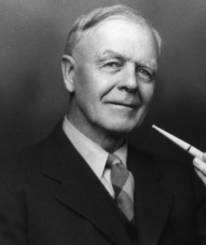Osteopathy, what is it ?
Osteopathy is a manual therapeutic approach that heals and prevents disorders in the human body. Osteopathy relies on manual contact for diagnosis and treatment. It takes into account the existential relationships between body, mind and spirit in health and disease. It emphasizes the structural and functional integrity of the body and the intrinsic tendency of the body to heal itself.


Osteopathic philosophy
Wholeness is one of the most fundamental principles of osteopathy.
The human body is considered to be a functional unit where all the anatomical components are interrelated.
For example, loss of tissue mobility affects local function. It promotes the development of tension, affects the circulation of fluids and nervous exchanges.
It is therefore essential to investigate not only the pain area, but also the patient's body as a whole. This leads the osteopath to having to work not only on the symptom but also on other areas.
A well-functioning body overall can express its natural capacity for regeneration.
In addition, minor or major trauma can impact the balance of our body. They can cause pain at the moment, but also affect our health for years.
Osteopathy is obviously aimed at reducing symptoms, but also at understanding how the problem took hold. The osteopath will thus be able to provide therapeutic responses adapted to the individual.
Thanks to personalized treatment, the patient regains his own balance. It is this overall balance that facilitates the process of self-healing, thus resolving the causes of suffering.
Symptom is far from the only goal of treatment, but of course it needs to be relieved. The symptom is a key to finding and treating the origin of the dysfunction.
"Patients each have a unique organism, history and symptoms."
Conduct of the consultation
The osteopathic treatment and the techniques used are adapted to the patient, his history and his age.
To consult an osteopath, it is not necessary to have a medical prescription.
Osteopathy being a manual therapy, the therapist therefore uses his hands to perform osteopathic examinations and treatments.
Discussion
The session begins with a discussion, an exploratory interview to reveal the concerns encountered by the patient at the origin of the reason for his consultation. Then, it helps us to provide a safe treatment.
Tests
Depending on the needs, the osteopath may first be required to perform several initial tests to verify that the patient's problems and the reason for the consultation are indeed their responsibility.
Secondly, he performs various osteopathic examinations which can take place on multiple areas of the body.
The purpose of these osteopathic tests is to detect alterations in tissue quality or restrictions in mobility, causing possible imbalances in all the systems that make up the human body.
Treatment
Thanks to this comprehensive osteopathic approach taking into account the patient as a whole, the osteopath will then proceed to treatment. He chooses different techniques adapted and specific to each patient.
When necessary, the osteopath offers stretching or simple exercises to be done daily. These exercises are designed to help promote and maintain a new balance in the body.
The human body has a natural ability to self-regulate and heal itself to overcome suffering, as long as the the body remains balanced.
After the treatment
It is important to allow time for the body to adjust to a new equilibrium, where the physical components again work in a more harmonious way. Once the body regains its balance, "nature" will do the rest of the work.
This explains why the disorders will sometimes be reduced at the end of the consultation or in the days that follow.
Sometimes it takes a simple consultation, or several consultations, or even a certain number of treatments spread over different periods. It all depends on the case and the physical, mental and environmental conditions of the patient.



